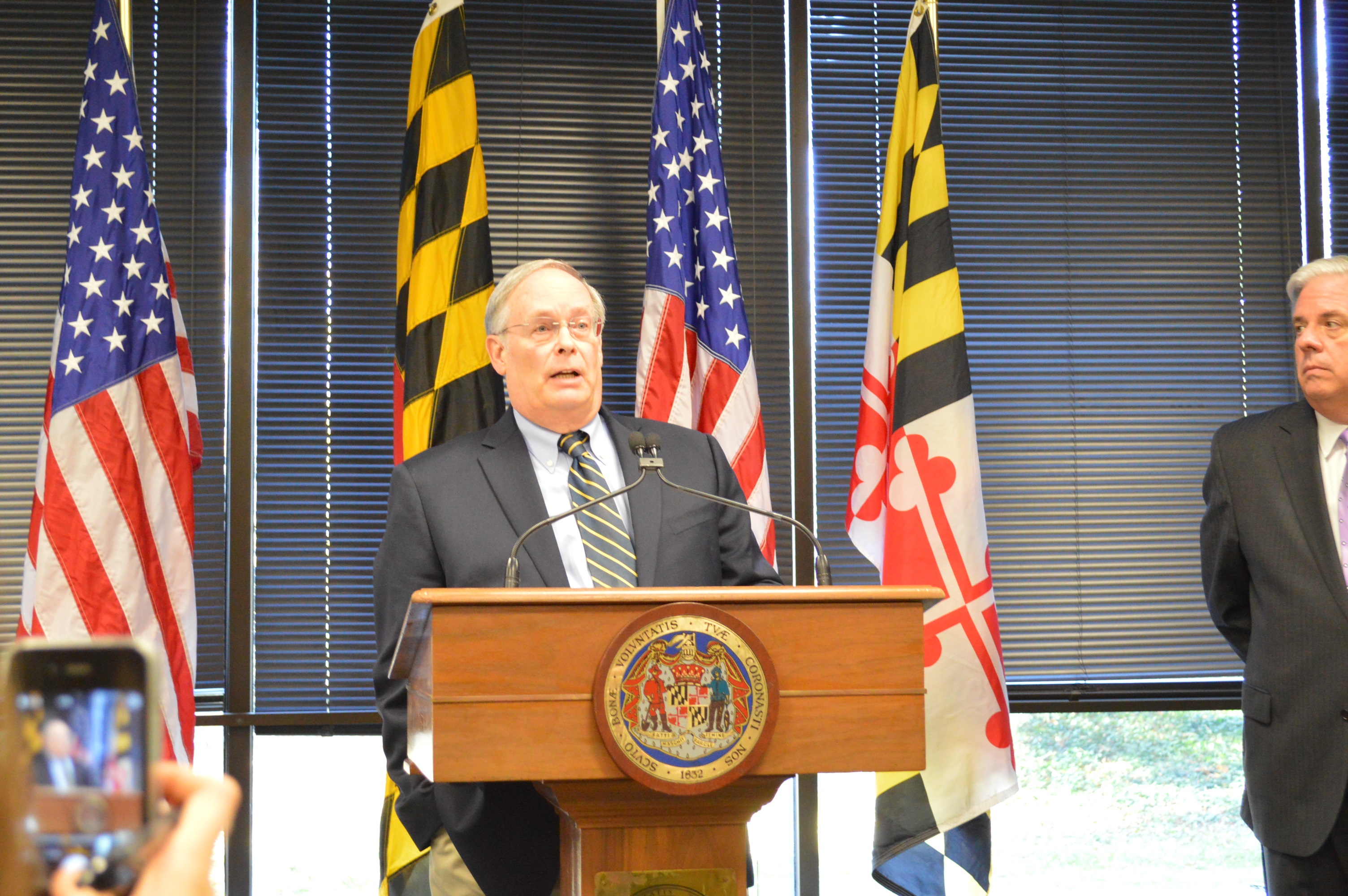
This map from the Department of Planning shows population growth during the last decade in the state's eight current congressional districts.
The 12 public hearings by the Governor’s Redistricting Advisory Committee on the shape of congressional and legislative districts officially begin Saturday with two hearings in Western Maryland.
This is the first time any of the redistricting hearings held every 10 years will take place on the weekend, as half of them will be this year.
But much of the maneuvering on the district lines is going on behind the scenes.
In Annapolis, at the rear of the subterranean ground floor of the Legislative Services Building, a large “Redistricting Room” has been set up with two large wall monitors for displaying computer-generated maps and a huge new $10,000 Hewlett-Packard Designjet printer that can print out wall-size multicolored maps.
“We’ll beat it up pretty good,” Karl Aro, executive director of Legislative Services, said about the printer. Aro, who is oversees the legislature’s 700-member non-partisan professional staff, will be assisting the redistricting process as he did both 10 and 20 years ago, before he got the top job.
While the public is being encouraged to submit its own plans at the public hearings or directly to the committee, only members of the General Assembly can use the services of the redistricting room to draw their own proposals. But computer software to draw congressional districts based on the U.S. Census is much more wildly available now, including an open-source free application.
According to other staff members familiar with the process, legislators are currently focused on the shape of their own districts.
The committee plans to finish its work by the end of September so the governor can submit a congressional plan for a special session of the General Assembly the week of Oct. 17. The special session is needed because the primary next year is on April 3.
Eight of the committee’s dozen hearings will be paired on the same days, with only three hours between hearings, including drive time.
The Senate is also in process of putting together a special standing committee on redistricting as it has done in the past, but that committee will only be acting after Gov. Martin O’Malley submits his proposed lines. The committee has not yet been announced, but it will likely look as it did in 2002: large, bipartisan and made up mostly of Senate leaders. In the past, the House of Delegates has used its large Rules Committee, also comprised of legislative leaders.
The ideal congressional district in Maryland is supposed to have almost exactly 721,529 people in it, and legislative districts are supposed to have 122, 813 people, give or take a few thousand.
The full list of hearings and how to testify or submit testimony and proposed maps is found on the website of the state Department of Planning.
–-Len Lazarick
Len@MarylandReporter.com






Good info. Might be worth exploring why the redistricting “season” is so compressed.